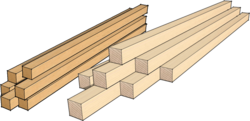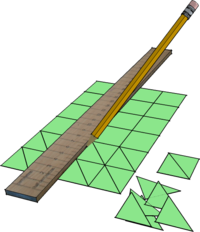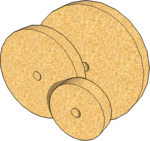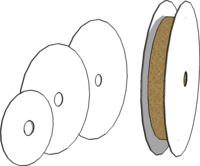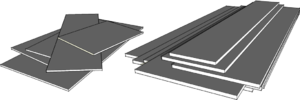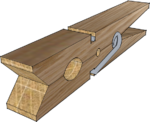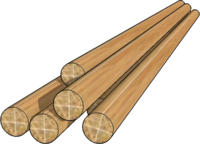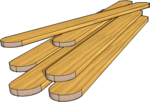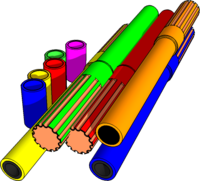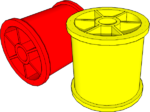Stripwood Technology Materials
From DT Online
Plain, unpainted or unvarnished wood and card have a porous surface, which is easily coloured with water based paints or dyes and glued using safe, non-solvent based adhesives such as PVA.
Used cartons can be turned inside out and resealed with double-side adhesive tape such that their plain card inner surface is revealed.
"Shiny" surfaces, such as plastics, foils and metals can be glued using solvent-based or hot-melt adhesives and joined mechanically (e.g. using screws or cable ties)
| Stripwood | Thin strips of Softwood or Jelutong, most commonly 8mm square but also 10mm and 12mm square, provide an easy to cut (e.g. using a Junior Hacksaw) and glue (e.g. using PVA) material for modelling. | |
| Card Triangles | These are cut out from medium card and used as Gussets to join together pieces of Stripwood by brushing on PVA glue. A useful size is 30mm x 30mm which can most easily be marked out using the width of a wooden ruler as a guide. | |
| MDF or Ply Discs. | An assortment of discs, between 20mm and 80mm diameter, cut from 6mm thick MDF or Ply, each pre-drilled with a 4.5mm hole, provides the basis of most wheels and pulleys used. They can be purchased ready-made or cut from sheet using a Hole Saw.
Note: This is most easily done if the sheet is first prepared into strips slightly wider than the required diameter. |
|
| Card Discs | An assortment of medium card discs, between 20mm and 80mm diameter, provide flanges for pulleys and the basis for setting out any radial structure (e.g. for simple Peg Gears) | |
| Thick Card | Thick card needs to be cut with a Craft Knife and so is best presented to very young children in the form of an assortment of pre-cut rectangles from which they make a choice. For older children pre-cut strips or varying widths can be offered for them to choose from and decide on the length to cut. | |
| Wooden Clothes Pegs | Plain wooden spring type clothes pegs can be glued on to structures using PVA to provide a good anchorage for bearings and axles | |
| Dowel | Plain wooden dowel, 4.5mm diameter, is used for axles but 6mm, 8mm and other larger sizes can also be useful. | |
| Matchsticks | Plain softwood matchsticks can be glued with PVA around card discs to create simple Peg and Cage Gears for example. | |
| Lolly Sticks | Plain wooden sticks can be glued with PVA for general construction detail and also larger Peg Gears | |
| PVC Tubing | Select two sizes: one which is a tight fit on dowel axles to make end caps to stop loose wheels falling off; and one which is loose fitting to make short spacers so that wheels do not rub against chassis members for example. | |
| Model Electric Motors | Small model D.C. motors can be used to power model vehicles and fairground rides for example. Depending on their size, it may be possible to mount them using plumbers' pipe clips or Terry Clips but more usually, they can be arranged to straddle two stripwood bearers, then fixed with a Cable Tie or glued using a Glue Gun | |
| Cable Ties | Also known as Tie Wraps these are available in several sizes and provide a good firm fixing (e.g. for electric motors). | |
| Plastics Tubing | Rigid plastics tube (e.g. made from Acrylic) can be purchased but old Felt-Tip Pens can be disassembled and the outer casing cut to length using a Junior Hacksaw. Short pieces can be used as bearings or axle spacers.
Note: To avoid making a mess use only water based pens! |
|
| Cotton Reels | Traditional plain wooden cotton bobbins can be glued using PVA but these are hard to find. Modern plastics cotton reels need to be fixed with solvent-based adhesives or a Glue Gun. They are a loose fit on 6mm diameter dowel and useful for spacers or pulleys in addition to general construction detail. | |
| Wooden Beads | Large wooden beads can, perhaps surprisingly, also be used as pulleys if using a wide elastic band. Nineteenth century factories powered their machines from a single engine driving a Line Shaft on which were arranged pulleys over each machine. The pulleys were slightly "barrel-shaped" such that the wide leather belts connecting them to the machines below, always ride to the high centre and stay on the pulleys. |
